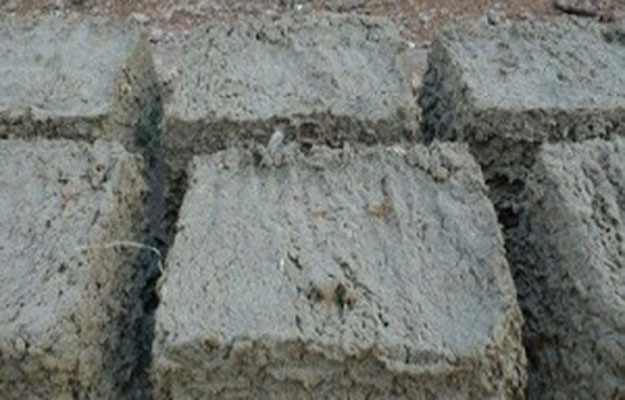Papercrete is one alternative for the survivalist faced with the need to build a structure, but lacking in traditional building materials.
It is quick, easy to make and durable as well as fairly inexpensive and while most municipalities would not recognize it as an acceptable building material, in a SHTF moment or in rural areas with few regulations, papercrete is a viable building alternative.
How Papercrete Is Made
In structural tests, paper concrete has reportedly tested in the 140-160 psi range. The stiffness of papercrete is a whole lot less than a solely concrete building of course, but it is reportedly strong enough to hold up the load of a roof on “low-height” buildings. Two-story structures have been built with concrete, and are very attractive and appear to be sturdy homes.
Papercrete Tips via Living In Paper:
• Papercrete may be mixed in many ways. Different types of papercrete contain 50-80 percent waste paper! Up to now, there are no hard and fast rules, but recommended standards will undoubtedly be established in the future.
• The basic constituents are water and nearly any kind of paper. Cardboard, glossy magazine stock, advertising brochures, junk mail or just about any other type of ‘mixed (lower) grade’ paper is acceptable. Some types of paper work better than others, but all types work. Newsprint is best.
• Waterproofed paper and cardboard, such as butcher paper, beer cartons, etc. are harder to break down in water. Catalogs, magazines and other publications are fine in and of themselves, but some have a stringy, rubbery, sticky spine, which is also water resistant. Breaking down this kind of material in the mixing process can’t be done very well. Small fragments and strings of these materials are almost always present in the final mix.
• When using papercrete containing the unwanted material in a finish, such as in stucco or plaster, the unwanted fragments sometimes show up on the surface, but this is not a serious problem. Papercrete can be sculpted into any shape and painted.
• Common additives to the paper concrete mixes in addition to Portland cement and clay often include sand, glass, and “fly ash.”
• The first three or so papercrete application must be either impaled or drilled into place above the rebar set in the concrete foundation. The rebar is necessary to prevent wall movement in a horizontal direction. Once only a couple of inches of the rebar is showing, lay another piece or rebar and wire it to the vertical pieces protruding from the foundation.
• Paprecrete builders then recommend pounding the vertical piece of rebar until it is almost level with the papercrete block. Once this is done, cover the emerging wall with your papercrete mortar of choice and start the next row of blocks.
• Wait at least several weeks after the walls have had time to settle before installing doors and windows. You can frame the wall and window area by leaving rebar out as you build the wall in the desired spots or use a chain saw and cut the openings out later.
Using wood harvested from your own property to support a barn, stall, or shed roof further increases the cost effective nature of papercrete building projects. Unlike some commercial building materials, papercrete does not contain any potentially harmful chemicals that could negatively impact livestock.
Papercrete can be painted after stucco has been applied or the Portland cement tinted to create a more pleasing appearance if desired.
When I first began making papercrete, I started with a small batch in a 5-gallon bucket and used a standard drill with a stucco bit.
If you elect to use this substance for building, please remember to check with your local municipality to see if it is only the list of approved building substances. To see other tips on using this inexpensive and versatile product, please visit Survival Life.
See the ‘How-To' make papercrete video on the following page!
